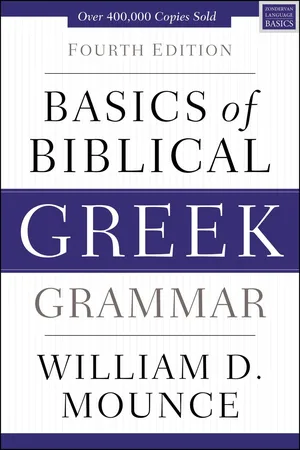
Basics of Biblical Greek Grammar
Fourth Edition
William D. Mounce
- 496 Seiten
- English
- ePUB (handyfreundlich)
- Über iOS und Android verfügbar
Basics of Biblical Greek Grammar
Fourth Edition
William D. Mounce
Über dieses Buch
Clear. Understandable. Carefully organized. Basics of Biblical Greek Grammar by William D. Mounce is the standard textbook for colleges and seminaries. Since its initial publication in 1993 its integrated approach has helped more than 250, 000 students learn New Testament Greek.
The fourth edition of Basics of Biblical Greek Grammar has been updated throughout based on continuing feedback from professors, students, self-learners, and homeschoolers, making it even more effective for today's students. Other improvements have been made based on recent developments in scholarship.
The key to the effectiveness of Basics of Biblical Greek Grammar in helping students learn is in how it introduces them to the language. Students learn about the features of the Greek language in a logical order, with each lesson building upon the one before it. Unnecessary obstacles that discourage students and hinder progress are removed, such as rote memorization of endless verbal paradigms. Instead, students receive encouragement along the way to assure them they are making the necessary progress. Detailed discussions are also included at key junctures to help students grasp important concepts.
By the time students have worked their way through Basics of Biblical Greek Grammar they will have learned:
- The Greek Alphabet
- Vocabulary for words occurring 50 times or more in the Greek New Testament
- The Greek noun system
- The Greek verbal system, including indicative and nonindicative verbs, and participles
A robust suite of learning aids is available for purchase to be used alongside the textbook to help students excel in their studies. These include a workbook, video lectures for each chapter featuring the author, flashcards keyed to vocabulary in each chapter, a laminated quick study sheet with key concepts, and audio of the vocabulary for each chapter to aid in acquisition.